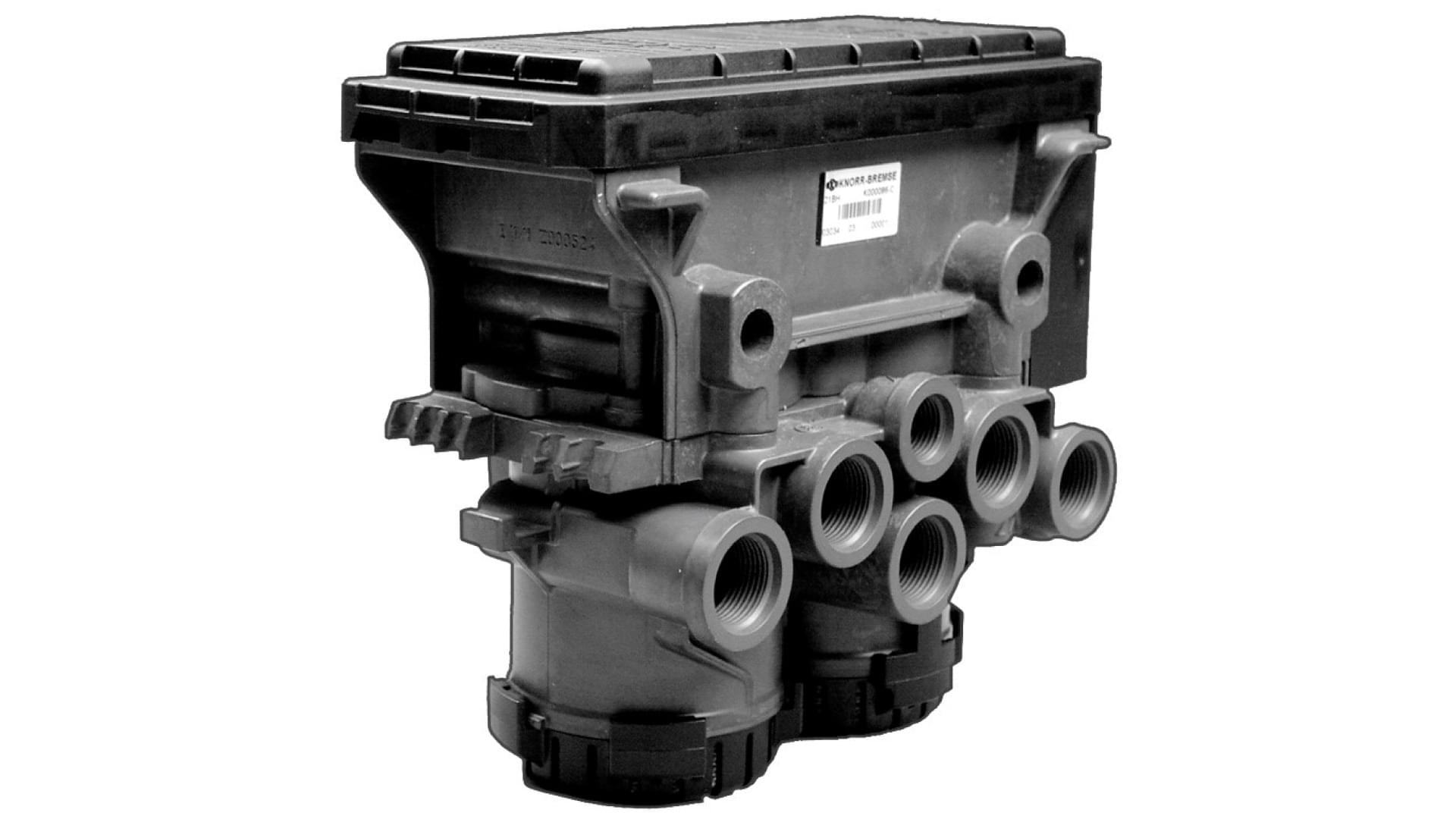Electropneumatic Braking Systems (EBS)
Electropneumatic Braking Systems (EBS) are on the way.
A major change in North American commercial vehicle braking systems is coming in the form of a migration toward Electropneumatic Braking Systems (EBS). EBS has been an established, road-tested safety technology in Europe and other regions of the world for over 20 years. In North America, the dual trends of Advanced Driver Assistance Systems (ADAS) and electric-powered vehicle development are driving the industry toward making EBS the base brake control system.
What Is EBS?
With EBS, the brake pressure is controlled electronically on every brake application – versus Antilock Braking Systems (ABS), where that control signal is pneumatic. While these digital controls enable EBS to deliver new brake system features – including smoother braking and improved brake balance and feel across different load conditions – it also allows automated driver-assist features to activate braking much more frequently than current ABS systems. More precise control during every brake application – even at the individual axle and wheel-end levels – means the benefits of EBS can be realized with automated braking interventions of advanced driver assistance systems like Bendix® Wingman® Fusion™, Bendix’s flagship collision mitigation technology.
EBS Features
- Precision control of air pressure at the wheel ends
- Adjusts to meet the air pressure needed in different situations
- ABS valves are combined into mechatronic devices
- Enhanced diagnostics
- Braking functionality and standards are unchanged
EBS Benefits
- Smoother, more consistent braking, especially at low speeds
- The driver doesn’t have to change the brake pedal pressure under different load conditions
- Fewer components and a simplified installation
- Faster and more precise identification of diagnostic problems
- No technician retraining is needed
- Redundant, pneumatic braking remains available
These advanced capabilities also make EBS suited for regenerative braking on an electric vehicle by blending the pneumatic braking with the retardation of electric engines. Because the air remains the actuation means, EBS helps fill the need for redundant systems. EBS does not change the fundamentals of braking, so if there’s some kind of electrical failure, the pneumatic system remains in place and operable even when EBS is not available.
A Technology for the Future
From a maintenance standpoint, there won’t be a need to retrain technicians on a new system, since most of the air brake components and processes remain the same as current standards. Plus, by using Bendix® ACom® PRO™ Diagnostic Software, maintenance professionals will be able to troubleshoot and maintain EBS functionality. With fewer components, EBS offers simplified installation compared with ABS. Additional uptime benefits can be realized through the advanced prognostics made possible by additional data available with an EBS system, including brake lining wear sensing and control on properly equipped air disc brake wheel-ends.
Looking to the future, EBS technology will lay the foundation for Global Scalable Brake Control (GSBC). In addition to the control unit, a manufacturer will be able to install various actuators, sensors, and modulators in a customizable configuration, depending on which functions are required by different vehicles and markets. EBS technology also complements continued development of Bendix® Wingman® Fusion™ collision mitigation technology to include additional higher levels of automated safety functions.
More Info

Products
Antilock Braking Systems (ABS)/Stability
Electropneumatic Braking Systems (EBS)
eTrac System
Intellipark System
Valves
Downloads
PACCAR F2.2 Operator's Manual
Volvo/Mack F2.2, Navistar F2.3 Operator's Manual
Wingman Fusion FLR-21 Radar Sensor Service Data Sheet
Wingman Fusion Sell Sheet
Tools
B2Bendix.com
ACom PRO Diagnostic Software
Sales and Technical Documentation
Part Number Search